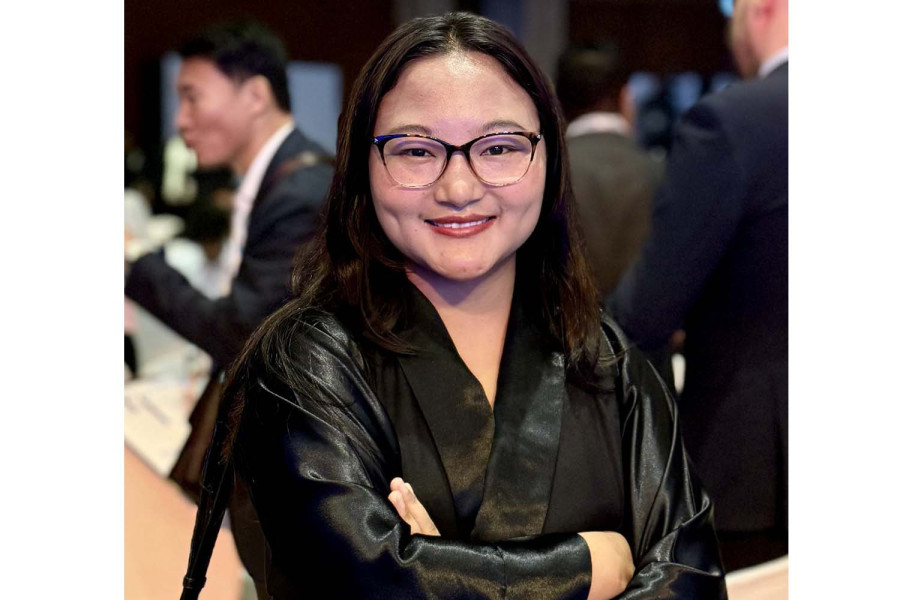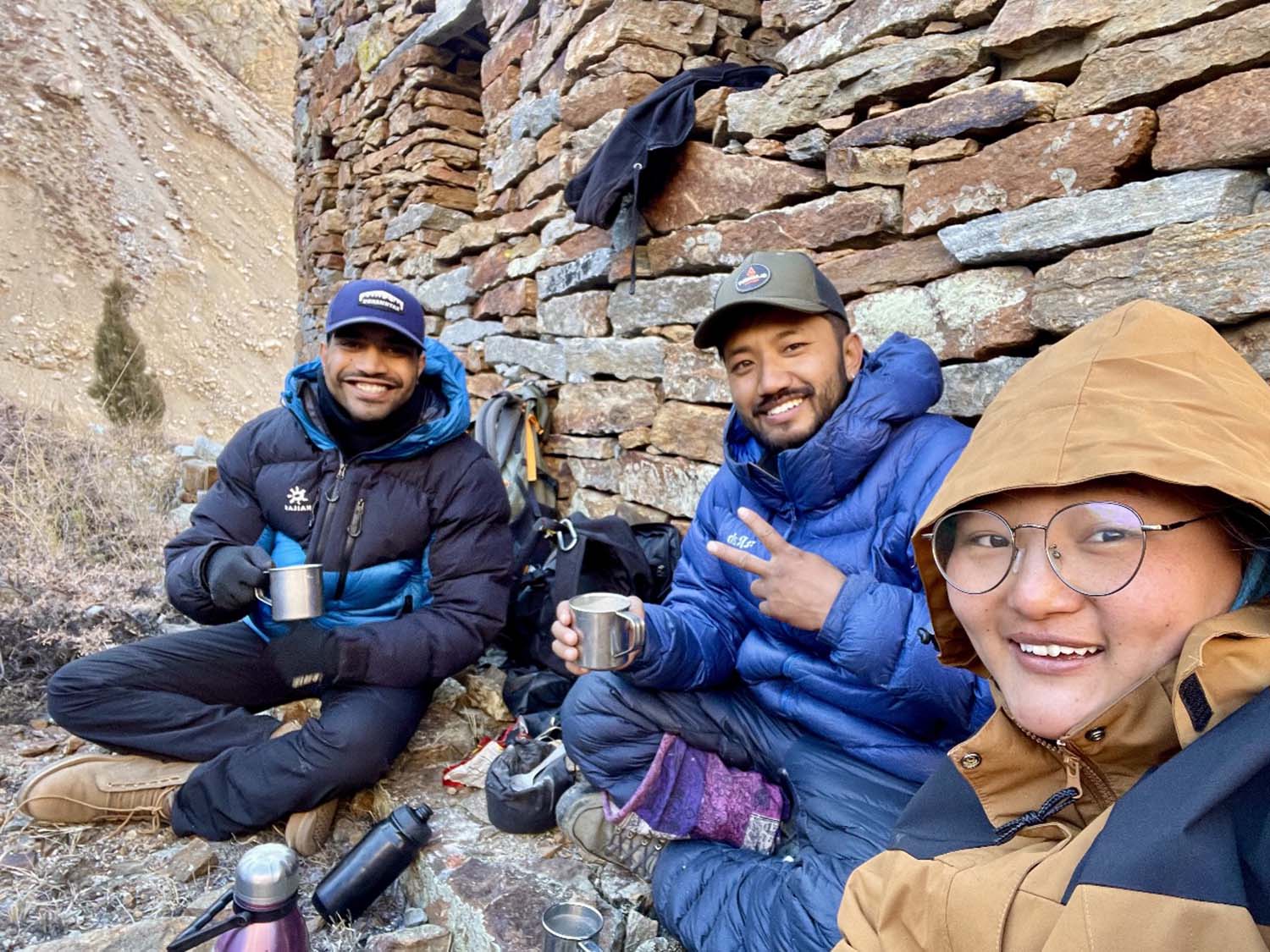Culture & Lifestyle
A climate activist documenting the crisis
Tashi Lhazom discusses growing up speaking the Limi Kye language and her debut documentary ‘No Monastery, No Village’.
Aarya Chand
Tashi Lhazom is a youth climate advocate working at the intersection of climate justice, gender, and indigenous rights. Her debut documentary, ‘No Monastery, No Village’ (2024), has won several awards, including Best Short Documentary at the Nepal-America International Film Festival (2024) and a finalist spot at Banff Mountain Film Festival (2024), one of the world’s top mountain film festivals.
In this conversation with the Post’s Aarya Chand, Lhazom shares her journey, which weaves language, political awareness and film to highlight the stories left untold.
Please tell us your background.
My village is in the Limi Valley in Humla, a remote corner of northern Nepal that most people ask, ‘Where is that?’ Most haven’t heard of it. However, now that I’ve brought it to people’s attention, they have come to know of the place. I didn’t have the chance to study there as no school existed until 2012, and even then, it was established by an NGO.
So, from a young age, I was sent to a boarding school in Kathmandu. Living away from home shaped my experiences and my outlook, but my connection to Limi has remained strong throughout. Everything I do comes back to my community, whether I plan it or not. It is just how deeply the place is rooted in me.
One of the central themes you discuss is language—how it shapes identity and sometimes limits it. How did growing up in a dominant Nepali-speaking society affect you and your family?
Language has always been a central part of my identity. I grew up speaking the Limi language—Limi Kye. But moving to Kathmandu, where Nepali dominates everything—from education to daily interactions—I felt vulnerable.
My mother never visited me in the city—not because she didn’t love me, but because she couldn’t speak Nepali and felt lost. My father, who spoke Nepali, visited more often.
When I was on a webinar during the Covid lockdown, someone asked if I was ashamed of not being able to speak Nepali fluently. I was taken aback, but I responded, ‘Maybe I am not fluent in the official language of Nepal, but I know Limi Kye, and that too is a Nepali language. Don’t you think?’ That was when I reclaimed pride in my voice.
What sparked your political awareness and led you to climate activism?
When I was studying in Delhi, a curiosity regarding the minority community struck me. I began researching my community and discovered that the Limi people are a minority in Nepal, largely invisible in the national narrative.
As I explored Nepal’s history and textbooks, I noticed how the idea of ‘unity in diversity’ often excluded Indigenous communities like mine. Our identities were erased or misrepresented—we were labelled as Tamang or Lama, though we don’t follow a caste system, and those terms don’t reflect our culture. It felt like the state was trying to fit us into boxes that weren’t ours.
That injustice led me to activism. In 2021, I co-founded Born to Lead, a female-led collective from Upper Humla, to work on issues related to ethnic identity and recognition. One of our biggest efforts has been pushing for ‘Humlo’ to be officially registered as our ethnic name. It is now under review by the Indigenous National Commission, but changing a mislabeled system is a slow process.
We have taken this fight to the cabinet. The government acknowledges that we have been mislabeled, but the process remains difficult.
What made you adopt filmmaking as a form of activism?
While studying Political Science at Hindu College, I joined workshops provided by the dramatic society, Ibtida, originally founded by filmmaker Imtiaz Ali. They offered short training sessions that opened my eyes to the world of creative expression. I had always been writing, but mainly in English, which didn’t reach my community.
I also realised that protesting alone wasn’t enough—activism needed creativity. Creative tools like advocacy writing and filmmaking can have a lasting impact—they stay with people.
I recall the 2011 glacier lake outburst flood in my village—it destroyed homes—and in 2012, an avalanche struck the herders. Both events received no coverage. But when something happens on Everest, the world notices. That imbalance made me turn to the media. I realised then that people believe in stories they can see.

What is ‘No Monastery, No Village’ about—and what philosophy or vision guided you in making it? How did the filmmaking process unfold?
It’s about the people of Limi Valley, and our relationship with the land. It shows how climate change for us isn’t an abstract concept, but a lived reality. The film explores how climate change doesn’t just destroy homes or landscapes, it threatens our intangible cultural heritage, and the essence of who we are.
The philosophy guiding the film was to humanise climate stories and data. I don’t use technical terms like ‘1.5 degrees’ or ‘greenhouse gases’—those can be dehumanising. The word ‘climate change’ isn’t even mentioned in the film, but every frame speaks about it.
The film is also about reclaiming our narrative, that’s why I made it in my own language, Limi Kye. The process was intense—we were a small team, with me as writer-director, one cinematographer/drone operator, and one sound producer. We shot over 50 hours of footage and edited it down to 27 minutes. It was my first film, and it taught me how meaningful and messy the creative process can be.
The film has travelled internationally and was even selected at Banff. How did audiences respond and what kind of conversations did it open up?
At Banff, I was surprised, and happy that my movie got selected—especially as a first-time filmmaker. Banff is like the Oscars for mountain and outdoor films, so being part of it opened many other opportunities and made it easier for the film to be selected elsewhere.
What moved me most was how audiences connected with Pema, the female lead. People kept asking, ‘How did you write such a powerful character?’ Beyond that, the film sparked thoughtful discussions, particularly about how climate change isn’t just about melting glaciers or rising temperatures, but also about the loss of cultural heritage. That part of the conversation is often overlooked. My film helped highlight that these elements—language, rituals, and memory—can’t be rebuilt once lost, and they can’t be financed with climate funds.
Even UNESCO reached out to watch the film. I’m also thrilled that institutions have recognised the value of this perspective—big universities like Stanford, Columbia, and the University of Toronto have shown interest in buying the film.
The film’s shoot involved working in high altitudes. Were there any moments that tested your limits during production?
Too many. The glacier I wanted to film is located 5,500 metres above sea level. Drones can only go up to 5,000 metres, so I had to climb. I never thought filmmaking would involve mountaineering, but there I was, hiking with gear. Then it snowed unexpectedly, blocking the roads. We had taken a vehicle from Simikot to Limi, but on our return, we had to rely on horses. Six horses, two helpers, and our equipment—none of us crew members knew how to ride. It was exhausting and expensive.
Limi is an international border area, so obtaining filming permits was challenging. Emotionally, it was tough as well. Initially, I wanted the story to revolve around a monk. However, documentary ethics don’t allow you to script what people say. Whatever the monk said was not substantial, and I felt stuck. I kept worrying that the film wouldn’t work. Still, I trusted the process. Film director Alfred Hitchcock once said, ‘God is the director.’ That became true for me.
What are you working on currently, and what’s your plan for the future?
I’m currently working on a new documentary titled ‘The Melting Crown’ about a mobile ‘tent’ school. I’m also collaborating on climate-related research with a UC Berkeley Professor and speaking at global platforms, such as the International Conference on Glacier Preservation in Tajikistan and the Rain Forest Youth Summit (RAYS) in Malaysia, where I connect storytelling with advocacy.




 16.16°C Kathmandu
16.16°C Kathmandu















